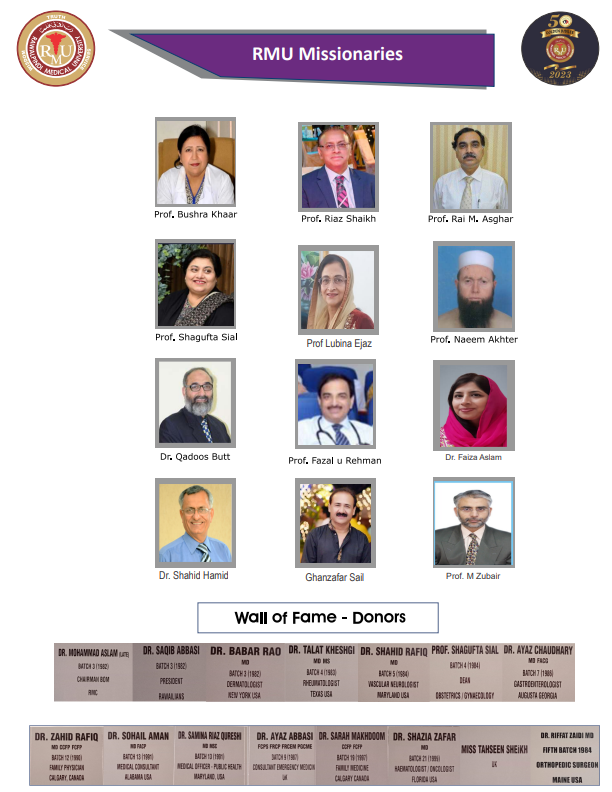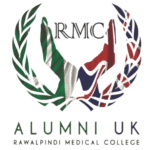About RMU
Rawalpindi Medical College, now Rawalpindi Medical University (RMU), has a rich history and legacy that justifies its establishment and growth over the years. The following points highlight the significance of RMU:
RMU was initially established in Faisalabad on March 18, 1974, and later shifted to Rawalpindi on November 5, 1974. The visionary founder principal, Prof. Abdul Latif, played a pivotal role in establishing the institution, even in an incomplete building.
Prof. Abdul Latif’s efforts went beyond mere establishment. He oversaw the construction of student hostels, staff colonies, and an auditorium, creating a conducive environment for both students and faculty.
Prof. Abdul Latif’s leadership extended to acquiring the Holy Family Hospital from a missionary church and the Central Government Hospital, later becoming Rawalpindi General Hospital and subsequently Benazir Bhutto Hospital. The District Headquarters Hospital also became the first teaching hospital affiliated with RMU.
Subsequent principals, such as Prof. Mohammad Nawaz and Prof. Mohammad Iqbal, were instrumental in establishing key components of RMU. They were part of a pioneering team that worked to lay the foundations of a comprehensive medical institution. Prof. Mohammad Iqbal and Prof. Saad Rana actively worked to establish a new teaching block in the Holy Family Hospital, with support from the Islamic Development Bank. RMU’s progress continued with each successive principal. Notable achievements include the establishment of the Department of Medical Education and the Institute of Allied Health Sciences in 2007, thanks to the vision of Prof. Muhammad Musadiq Khan.

Prof. Mohammad Umar, the first Rawalian Principal, focused on restructuring undergraduate training programs, enhancing student facilities, and even dedicating a beautiful park to Rawalians. He also played a role in facilitating a consensus on national guidelines for undergraduate medical training, reflecting RMU’s commitment to quality education.
RMU expanded its contributions to healthcare by establishing state-of-the-art centers such as the Center for Liver and Digestive Diseases, the Multi-Organ Failure Centre, the Medical ICU, the Department of Infectious Diseases, and the Department of Emergency and Critical Care. Over the years, RMU has consistently excelled in university examinations, and its graduates have made significant contributions to the medical field both nationally and internationally.
RMU’s academic programs are accredited by organizations like the CPSP and PMDC. The college has received recognition from international bodies, including the General Medical Council UK and American Specialty Boards. It has also fostered internship programs with various foreign universities and earned recognition from the World Health Organization (WHO).
In summary, Rawalpindi Medical University’s journey from its establishment in Faisalabad to its current status as a renowned medical institution in Rawalpindi is a testament to the dedication, hard work, and vision of its founding leadership and subsequent principals. RMU’s commitment to excellence in education, patient care, and international recognition has contributed significantly to the field of medicine and healthcare








